How Can I Tell How Old My Rescue Dog Is?
This post may contain affiliate links. We may earn money or products from the companies mentioned in this post.
When I adopted my rescue dog Wally in early 2019, he was about 1.5 years old.
That’s what his adoption paperwork said and judging by his overall looks, it sounded about right!
But how can I tell how old my rescue dog is when there’s no paperwork, or when it’s highly unlikely that the paperwork is correct?

That’s what we’ll look at in this blog post, using 6 specific indicators!
How Old Is My Rescue Dog?
Well, I’m not going to lie to you, determining the exact age of a rescue dog can be challenging!
Especially if you don’t have access to their complete medical and background information.
With Wally, I was lucky because I DID have that information.
I knew that he was an owner surrender to a kill shelter and had been pulled by a rescue organization.
From there, he was adopted out to a family who returned him to the rescue organization 2.5 months later because they claimed to be allergic to him.
A few days before he was returned, I started fostering for the rescue, and my first foster pup was Wally.
Since I turned into a foster failure and adopted Wally myself, that’s how Wally and I ended up with each other.

Wally shortly after I adopted him, clearly a young pup!
But either way, his adoption paperwork came with his certificate of rabies vaccination, which mentioned his date of birth.
Fun fact: it’s on the same day and month as mine, August 11, but obviously a different year, 2017.
So it was obviously meant to be!
OK, now without further ado, let’s look at how to tell the age of a rescue dog!
Inspect Your Rescue Dog’s Teeth
Your rescue dog’s teeth are one the best indicators for their age, so go ahead and examine your dog’s teeth.
Puppies usually have very white, clean teeth, while older dogs usually have more tartar buildup and signs of wear.
As a general rule of thumb, puppies start losing their sharp baby teeth around 4-6 months, and their permanent teeth come in by 6-8 months.
Between 1 and 2 years of age, dog teeth lose the pearly white shine that’s so common in puppies.
Between 3 and 5 years of age, dogs tend to have some yellow or brownish deposits on their teeth, especially if they weren’t provided with healthy dog chews such as bully sticks that help clean their teeth.
Between 5 and 10 years of age, dog teeth start showing more wear and tear, including signs of periodontal disease such as:
- Bad breath
- Red and inflamed gums
- Tartar build-up
- Nasal discharge
Tip: Indirect signs of dental issues in your rescue dog can also be difficulties in chewing or favoring one side of the mouth when chewing, as well as pawing at their mouth.
Senior pups who are older than 10 tend to have heavy tartar buildup paired with missing and broken teeth.
Some senior dogs may even be missing all of their teeth!
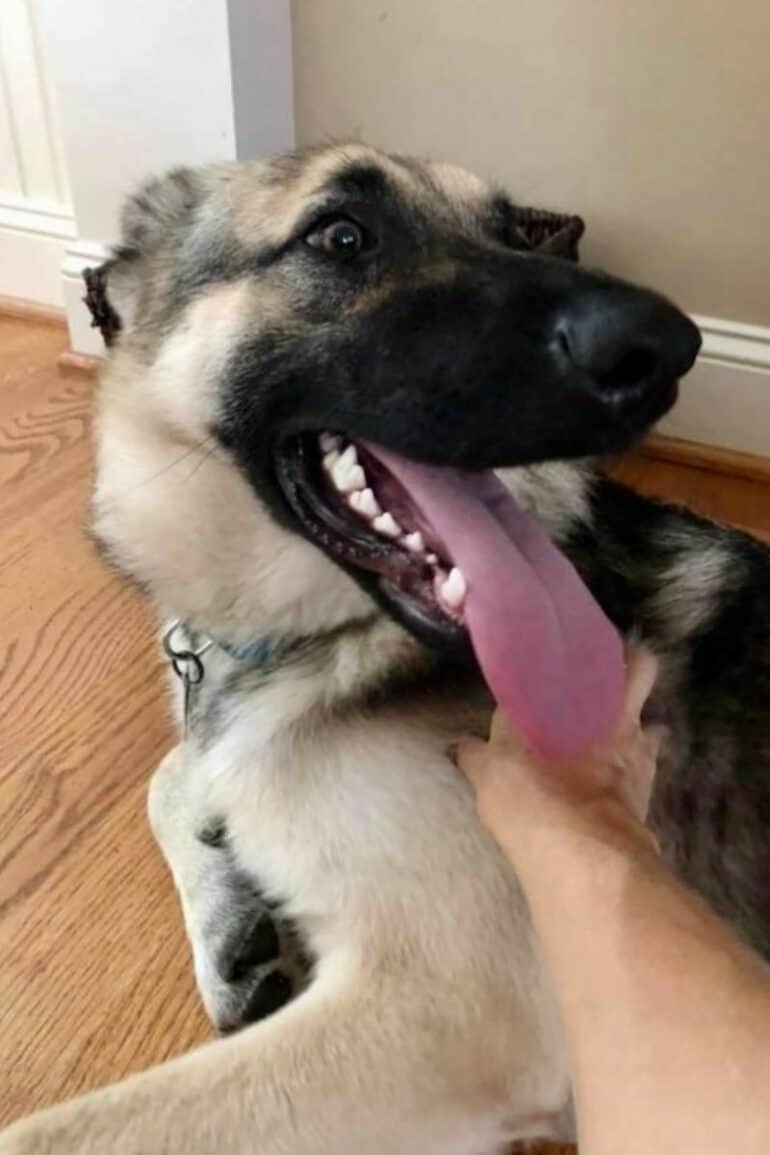
12 month old German Shepherd Dane showing off his pearly whites! He was one of my dog walking clients, and a rescue pup.
Does Your Rescue Dog Have Any Signs Of Graying Fur?
Another way of telling the age of a rescue dog is to look at the color of their fur.
Because just like humans, dogs can experience graying fur as they enter their senior years.
On average, this happens anywhere from 5 to 10 years of age.
It typically begins around the muzzle or the face and can continue to be reflected in their coat.
However, the onset and extent of graying can vary among dogs and breeds.
Since smaller dog breeds tend to have longer lifespans, they may experience graying later in life compared to larger breeds with shorter lifespans.
Wally, for example, is a medium size dog who will turn 6 next month and doesn’t show any signs of graying yet.
Good to know: Graying can also be a sign of chronic stress, anxiety and certain medical conditions in dogs like autoimmune diseases, hypothyroidism and nutritional deficiencies.
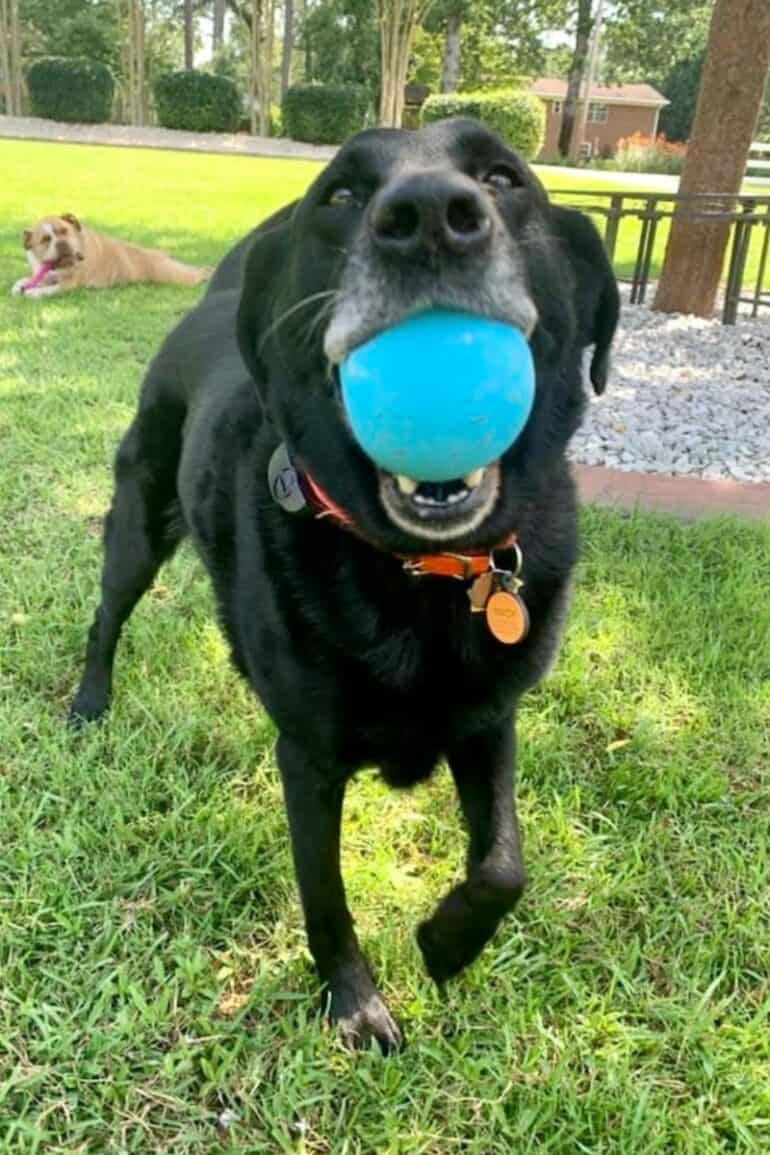
8 year old Lab mix Macy with her graying muzzle. She was one of my former dog walking clients.
Take A Look At Your Rescue Dog’s Eyes
A dog’s eyes can also help reveal the age of a rescue dog.
Besides graying fur, older dogs commonly develop a cloudiness in their eyes.
Again, this happens sooner in large dogs with a shorter lifespan as it does in smaller dog breeds with a longer life expectancy.
But either way, the cloudiness or opacity in older dogs’ eyes is often associated with a condition called nuclear sclerosis or lenticular sclerosis.

11 year old Shih Tzu Normie’s clouded eye (he only had one eye). He was also a former dog walking client.
It’s a natural age-related change in the lens of the eye where the lens fibers become compacted and densely packed with proteins, causing the lens to appear hazy or cloudy.
The cloudiness tends to start near the center of the lens and then spreads outward.
(Age-related) cataracts are another type of eye condition that causes cloudiness, but unlike nuclear sclerosis, it involves the lens becoming more opaque and can lead to vision impairment.
How’s Your Rescue Dog’s Hearing?
Hearing can be affected by age-related changes in dogs, just as it can in humans.
So if your rescue pup doesn’t seem responsive to sounds in general and seems to ignore you when you call them, they’re likely older than 5.
And no, we’re not talking about selective hearing!
Note: Certain ear infections or injuries to the ears can damage the structures involved in hearing, leading to temporary or permanent hearing loss.
These issues can occur at any age and are not exclusive to older dogs!
That said, you’ll want to take multiple factors into consideration when you’re trying to determine if your rescue dog’s hearing issues mean they’re an older dog.
How To Tell The Age Of A Rescue Dog: Muscle Tone & Body Shape
Young puppies generally have a soft, plump appearance with less defined muscle tone.
They may have a rounder belly and shorter limbs that seem out of proportion compared to the rest of their body.
Adult dogs, between 2 to 7 years old, tend to have a more mature body shape and well-defined muscle tone.
They should have a balance between muscle mass and body fat, resulting in a healthy and fit appearance.
As dogs enter their senior years, around 7 years and older, they usually start to show signs of age-related changes.
Their body shape can become less defined, and they may have looser skin, a slight sagging of muscles, and even some fatty deposits.
Observe Your Rescue Dog’s Energy Level & Behavior
Puppies and young dogs under the age of 3 are generally more energetic and playful than older dogs.
During this life stage, they’re more active, playful, and curious than older dogs.
Younger dogs also have shorter attention spans and may exhibit more destructive behavior.
For example, chewing on inappropriate items like your furniture, shoes and your kids’ toys.
By the way, check out our blog post on how to stop a dog from chewing on things.
On the other hand, older dogs are usually calmer, have a more predictable routine, and show signs of maturity.
Celebrate Your Rescue Dog’s Gotcha Day
But even if you only end up guesstimating the age of your rescue dog, that’s OK too.
Regardless of the age of a rescue dog, a fun way to celebrate them is their “Gotcha Day”.
That’s the day when you adopted your pup!
For Wally, I celebrate both his actual birthday on August 11 as well as his Gotcha Day on February 1.
Here are some ideas to make either celebration extra special:
Throw a “Puppy Paw-ty”
If your rescue pup does well around other dogs, invite their doggie friends over for a fun-filled celebration.
You can set up a dog-friendly party area with dog birthday party decorations, yummy treats, and dog toys that encourage joint playtime.
For example, tug-of-war dog rope toys.
You can even have a doggy birthday cake or pup-friendly snacks.
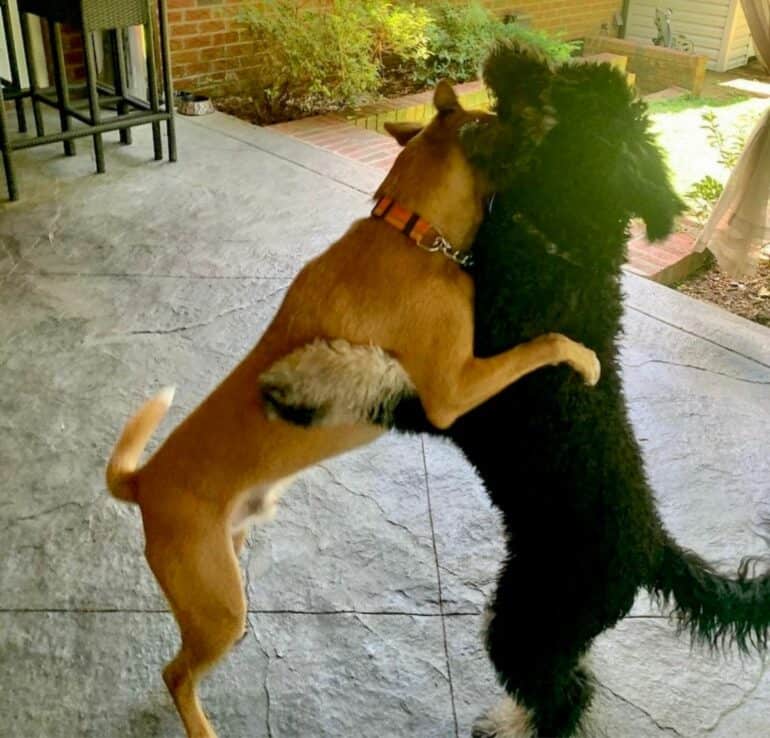
Wally celebrating his birthday with his doggie friend Rory
Share A Special Activity With Your Rescue Dog
Plan a day trip to a dog-friendly park, beach, or hiking trail.
That’s a great opportunity to allow your rescue dog to explore new sights, sounds, and smells.
Pack a picnic for both of you to enjoy during the outing!
Organize a Photoshoot
Hire a professional pet photographer or set up your own DIY photoshoot to capture beautiful memories.
Share the pictures on your or your pup’s social media account and create a personalized photo album or frame your favorite shots.
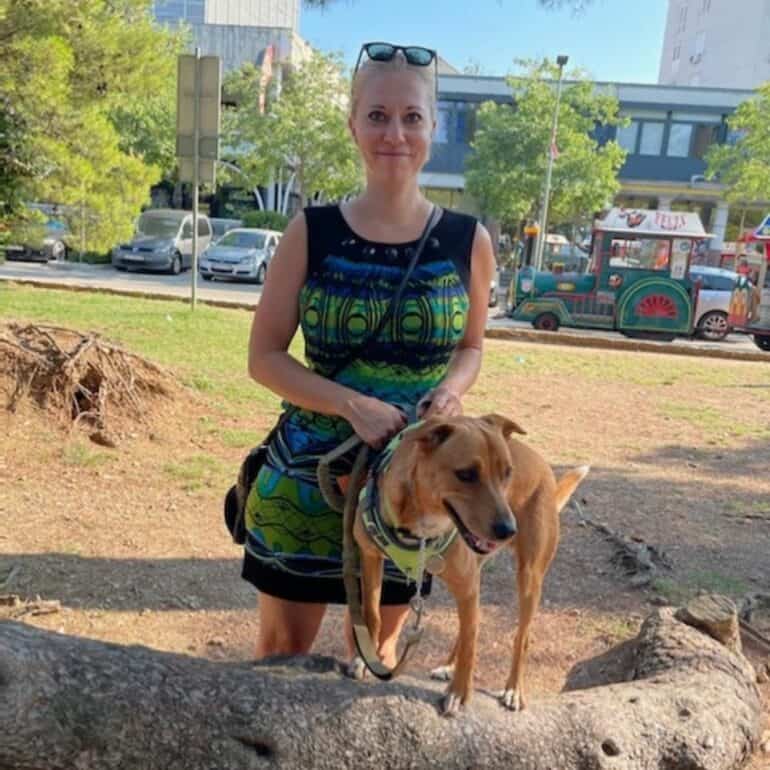
Wally and I went on a birthday summer trip for my 41st birthday and his 4th doggie birthday.
Create a Memory Box
Gather mementos from your journey with your rescue dog, such as photos, adoption papers, collar tags, or any significant items.
Decorate a special box and place these memories inside. It can be a heartwarming reminder of your bond and how far you’ve come together.
You can also customize a dog milestone chalkboard sign!
Support Animal Rescue
Use your rescue pup’s Gotcha Day celebration as an opportunity to give back.
For example, by making a donation to their animal shelter or rescue organization in honor of your rescue dog’s Gotcha Day.
You can also volunteer your time, organize a pet supply drive, or spread awareness about dog adoption.
Whatever you end up doing on these special days, remember that the most important thing is to shower your rescue dog with love, attention, and gratitude in return for their unconditional love and loyalty they share with you.
Bottom Line
I hope you found an answer to the question: how can I tell how old my rescue dog is?
Before jumping to any premature conclusions as far as the age of your rescue dog, remember to look at your pup’s overall appearance in order to estimate their age.
Here are a few indicators you can use:
- Teeth condition
- Physical appearance
- Muscle tone and body shape
- Energy level and behavior
It’s important to remember that these criteria are not foolproof and can only give you a rough estimate of the age of a rescue dog.
Consulting with a veterinarian is the best way to get a more accurate assessment based on a physical examination and professional expertise.
How old do you think your rescue dog is? Let us know in the comment section below this blog post!
Related Articles:
Save To Pinterest
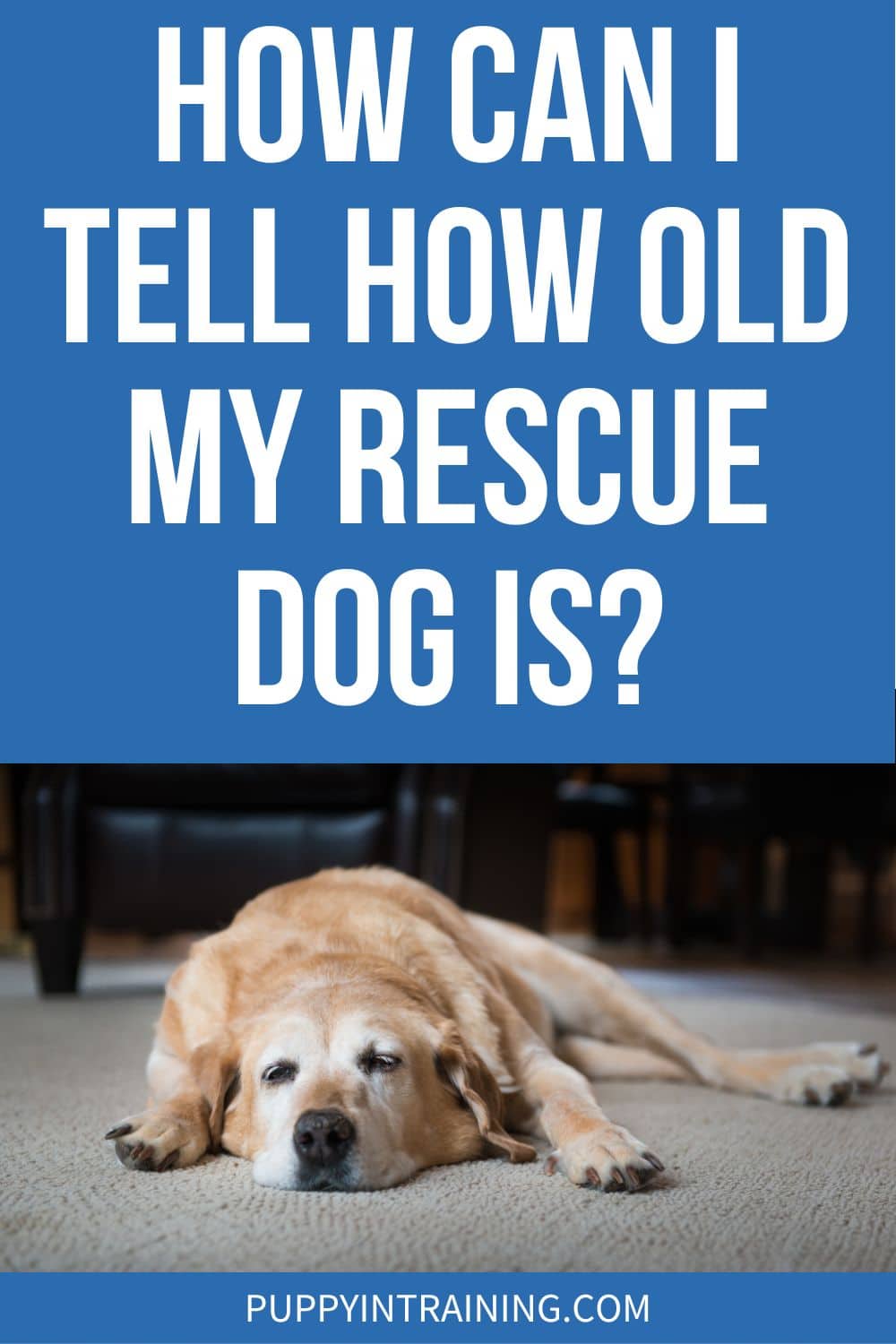
Top Picks For Our Puppies
- BEST DOG CHEW
We Like: Beef Collagen Sticks - All of our pups love to bite, nip, and chew. We love using Collagen Sticks to help divert these unwanted behaviors. - BEST PUPPY TOY
We Like: Calmeroos Puppy Toy w/ Heartbeat and Heat Packs - Perfect for new puppies. Helps ease anxiety in their new home. - BEST DOG TREATS
We Like: Crazy Dog Train-Me Treats - We use these as our high-value treats for our guide dog puppies. - BEST FRESH DOG FOOD
We Like: The Farmer's Dog - A couple months ago we started feeding Raven fresh dog food and she loves it! Get 50% off your first order of The Farmer's Dog.
Check out more of our favorites on our New Puppy Checklist.